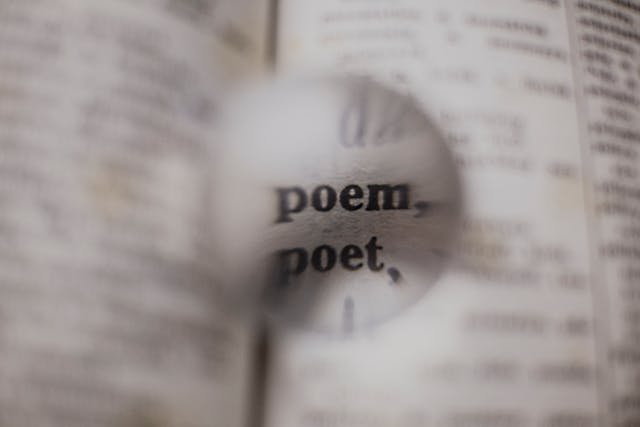
The Harlem Renaissance was a cultural movement that celebrated African American music, culture, and literature.
During this period, many poets emerged, contributing to the movement with their powerful and thought-provoking works.
In this blog post, we will explore the foremost figures of the Harlem Renaissance, focusing on Langston Hughes, Claude McKay, Countee Cullen, and other notable poets of the time.
The Foremost Harlem Renaissance Poet Figures

Langston Hughes
Langston Hughes stands as a towering figure among the poets of the Harlem Renaissance.
Born in 1902, Hughes emerged as a luminary during the vibrant cultural and artistic period of the 1920s and 1930s.
His poetry became a resonant voice for African Americans, delving into the complexities of their lives, aspirations, and struggles during a transformative era.
Notable for his evocative works such as “Harlem,” “The Weary Blues,” and “I, Too, Sing America,” Hughes eloquently captured the essence of the African American experience, leaving an indelible mark on literary history.
- Read also: Time Travel Through Text: Renaissance Literature Characteristics
- Read also: Unveiling the Themes of Northern Renaissance Literature
Claude McKay
Hailing from Jamaica, Claude McKay added a distinctive voice to the Harlem Renaissance.
His poetry, deeply rooted in the African American experience, reflected the challenges and aspirations of the black community in America.
McKay’s verses explored the relentless pursuit of equality and freedom, addressing issues such as racism and social injustice.
Renowned for works like “The Harlem Dancer,” “The Lynching,” and “If We Must Die,” McKay’s impactful narratives resonated with the struggles and aspirations of his contemporaries, contributing significantly to the Renaissance’s poetic tapestry.
Countee Cullen
Countee Cullen, an influential poet of the Harlem Renaissance, distinguished himself with an elegant and sophisticated poetic style.
His exploration of themes such as identity, race, and the African American experience exhibited a depth that captivated readers.
Cullen’s poetry transcended the ordinary, delving into the complexities of heritage and the African American legacy.
Notable works like “Heritage,” “From the Dark Tower,” and “Yet Do I Marvel” showcase Cullen’s ability to navigate intricate subjects with grace and intellectual depth, solidifying his place among the foremost poets of the era.
Other Notable Poets of the Harlem Renaissance

Wendolyn B. Bennett
Wendolyn B. Bennett emerges as a significant poet and writer of the Harlem Renaissance, contributing profoundly to the era’s cultural and intellectual landscape.
Her works courageously delved into pressing issues of race, gender, and social justice, offering poignant reflections on the African American experience.
Bennett’s notable pieces, including “To a Dark Girl,” “Heritage,” and “The Hour of Harlem,” showcase her poetic prowess and commitment to addressing the complexities of identity and equality during a transformative period in American history.
James Weldon Johnson
James Weldon Johnson, a luminary of the Harlem Renaissance, not only made waves as a prolific writer but also served as a leader of the NAACP, advocating for civil rights.
His poetry became a resonant voice, exploring themes rooted in African American history, culture, and identity.
Johnson’s influence extended beyond his literary contributions; he penned iconic works such as “Lift Every Voice and Sing,” often referred to as the Black National Anthem, as well as “The Creation” and “Go Down, Death.”
Johnson’s multifaceted impact played a crucial role in shaping both artistic and social narratives during this pivotal period.
Arna Bontemps
Arna Bontemps, a versatile figure in the Harlem Renaissance, etched his name as a poet, novelist, and librarian.
His literary contributions significantly enriched the cultural dialogue of the time, addressing themes of African American history, culture, and identity.
Bontemps’ poetry, marked by works like “Bronze,” “The End of the Beginning,” and “The Return,” captured the essence of the Renaissance’s intellectual fervor.
As a librarian, he played a crucial role in preserving and promoting African American literature, leaving an enduring legacy that extends beyond his written words.
- Read also: Contrasting Worlds: Renaissance Art Vs. Medieval Art
- Read also: Exploring the Splendor: Spanish Renaissance Architecture
Conclusion
The Harlem Renaissance was a time of great artistic and cultural innovation, and its poets played a significant role in shaping the movement.
From Langston Hughes to Claude McKay, Countee Cullen, Wendolyn B. Bennett, James Weldon Johnson, and Arna Bontemps, these poets used their words to explore the experiences of African Americans and inspire a sense of pride and hope.


